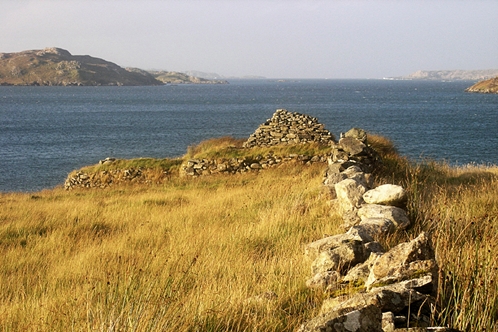An Saighdear Chaluim Bhain
Donald Matheson, an Saighdear Chaluim Bhain, was a son of Malcolm Matheson (Calum Bàn) of Valtos and Crowlista. (Calum Bàn has some interesting ancestors who can be found by following the lines back via Hebridean Connections.) Donald was born in the 1740s and joined the army, serving at the siege of Louisbourg in 1758, and later with the 78th Seaforth Highlanders in India and Ireland. He returned to Uig where he married Chirsty Macdonald and had a large family.
One of their children, also Donald, joined the Hudson’s Bay Company in 1815 and was offered land in Manitoba, but came back to Lewis in 1821. He married Helen Maciver of Carnish and lived in Timsgarry until they emigrated to Nova Scotia; three of their children were born in Lewis and nine more in Canada. After Donald Sr. died in 1831, his widow Chirsty joined the rest of the family across the sea.
The following song, An Saighdear Chaluim Bhain, is said to have been written for Donald Sr during his time as a soldier in Ireland, though whether by Chirsty is unknown.
Hi horaibhe hoirinn hoirinn
Hi horaibhe hoirinn ail
Hi horaibhe, och is eileadh
Leamsa b’eibhinn d’fhaicinn slan.
Chuir iad thu air tìr an Eirinn
‘S aotram bha do cheum air sràid
Chuir iad umad dèise an t-saighdear
Bu fhèin an diaman a-measg chàich.



